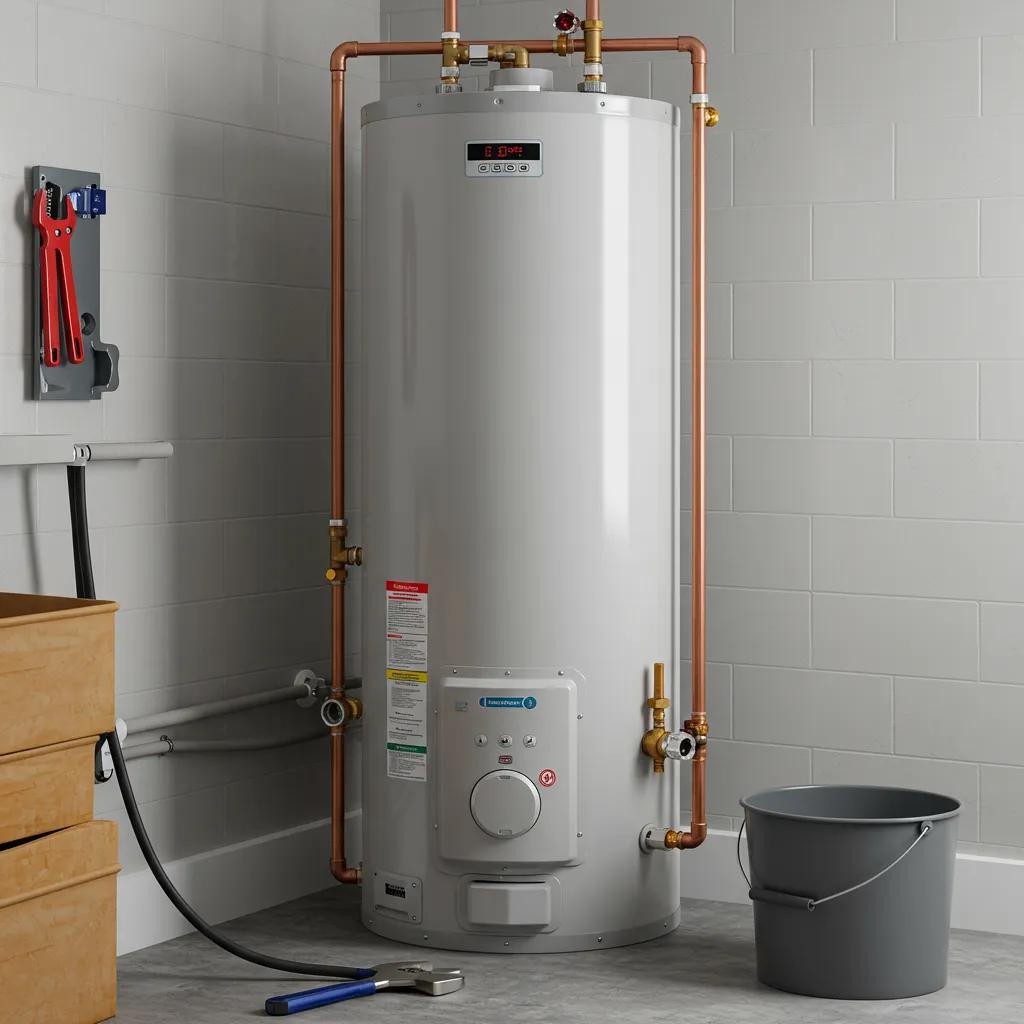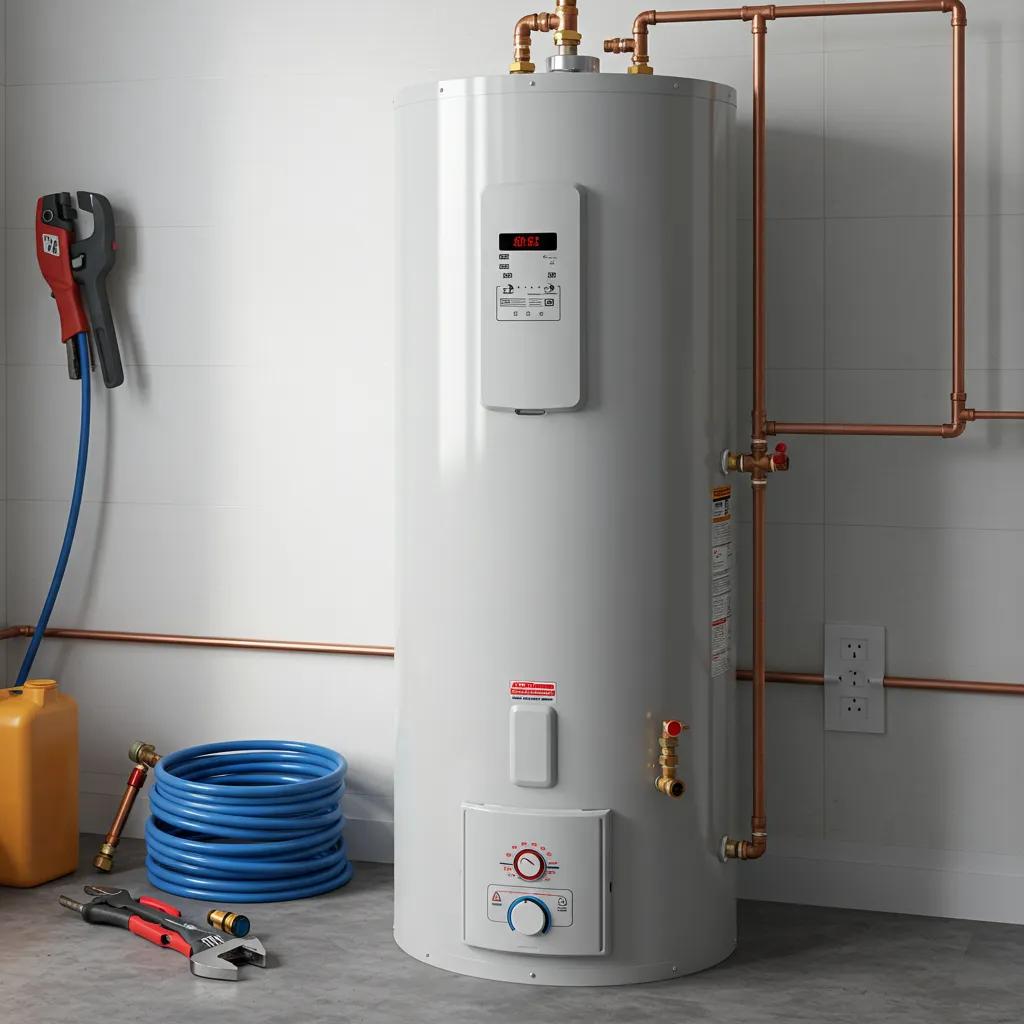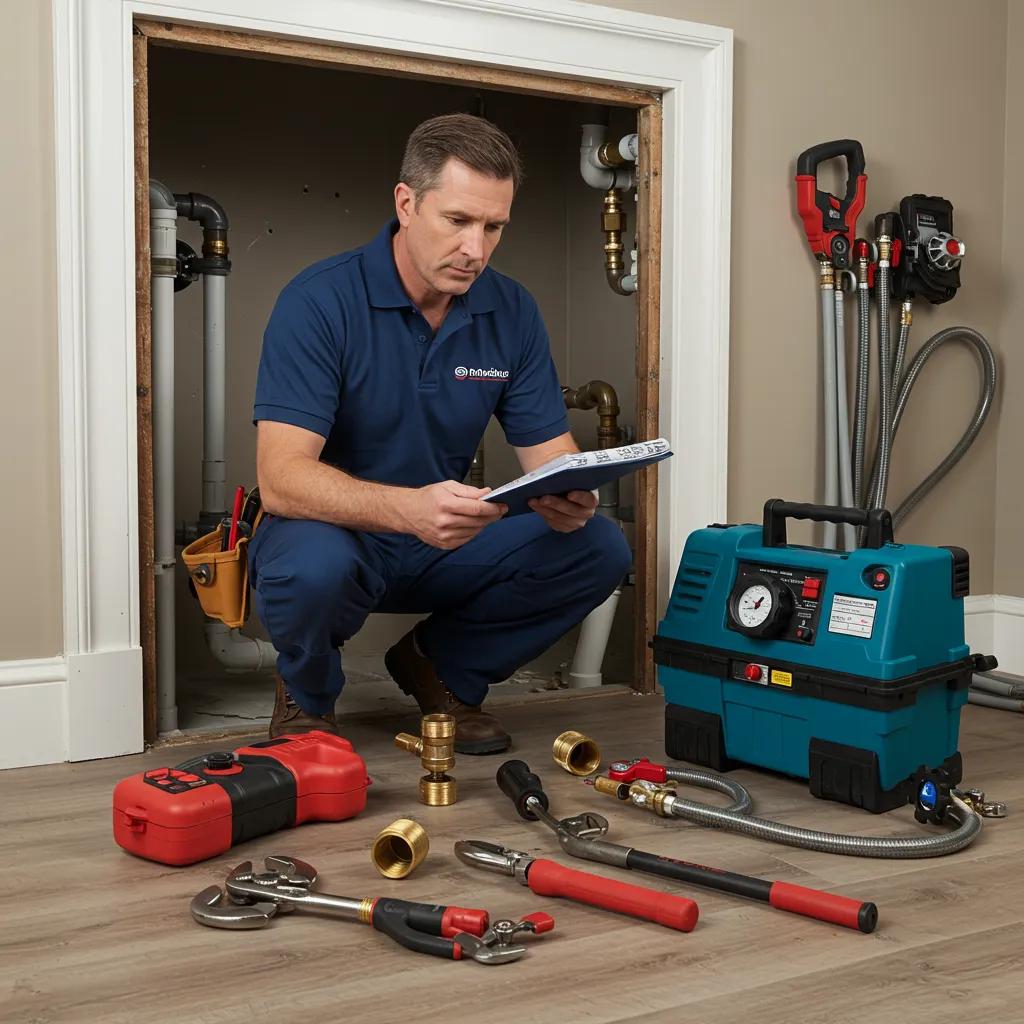How to Identify and Solve HVAC Issues: Common Problems and Effective Troubleshooting Solutions
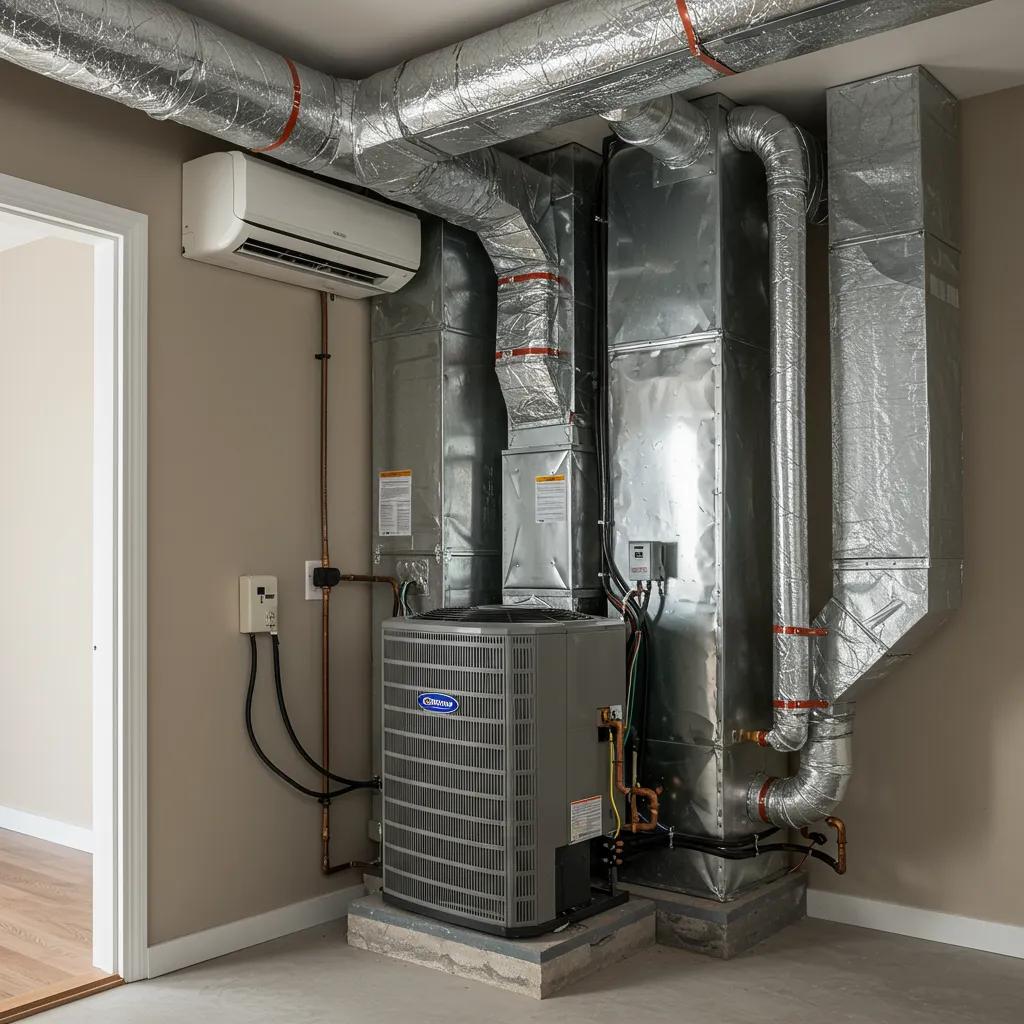
Struggling with inconsistent temperatures or unexpected breakdowns in your heating, ventilation, and air conditioning (HVAC) system can jeopardize comfort and inflate energy bills. Identifying and solving HVAC issues involves spotting symptoms, understanding root causes, and applying targeted troubleshooting or professional repairs. In this guide, you’ll learn to recognize common HVAC problems, troubleshoot an air conditioner that won’t blow cold air, diagnose furnaces that fail to heat, decode strange system noises, address thermostat errors, and implement preventative maintenance. We’ll also explain when it’s time to call local Erie, PA experts from C Carlin Plumbing, a full-service contractor with 150 years of combined technician experience serving Erie County since 1994, to ensure reliable, warrantied solutions.
What Are the Most Common HVAC Problems Homeowners and Businesses Face?
HVAC systems often fail due to wear, airflow blockage, or control malfunctions long before their expected service life. Common HVAC problems and solutions revolve around troubleshooting components like filters, thermostats, refrigerant circuits, and blower motors. Recognizing these issues early reduces repair costs and restores comfort quickly by addressing the precise malfunction or scheduling professional service.
Which Symptoms Indicate HVAC System Malfunctions?
HVAC system malfunctions manifest through airflow irregularities, temperature swings, or unusual sounds that signal component distress.
Key symptoms include:
- Weak or No Airflow when vents produce minimal or nonexistent airflow despite fan operation.
- Uneven Temperature Zones causing hot and cold spots in the same building.
- Rapid Cycling where the system switches on and off frequently, indicating thermostat or refrigerant imbalances.
- Rising Energy Bills without usage changes, often linked to efficiency loss from clogged filters or duct leaks.
Observing these signs points to underlying issues such as blocked filters, refrigerant imbalance, or electrical faults and sets the stage for targeted troubleshooting or calling a qualified HVAC technician.
HVAC System Fault Modeling and Diagnostics Review
Buildings consumed about 40% of primary energy and 70% of the electricity in the U.S. It is well known that most buildings lose a portion of their desired and designed energy efficiency in the years after they are commissioned or recommissioned. Majority of the Heating, Ventilation, and Air-Conditioning (HVAC) systems have multiple faults residing in the systems causing either energy, thermal comfort, or indoor air quality penalties. There are hundreds of fault detection and diagnostics (FDD) algorithms available, but there is lacking a common framework to assess and validate those FDD algorithms. Fault modeling is one of the key components of such a framework. In general, fault modeling has two purposes: testing and assessment of FDD algorithms, and fault impacts analysis in terms of building energy consumption and occupants’ thermal comfort. It is expected that fault ranking from the fault impact analysis can facilitate building facility managers to make decisions. This paper provides a detailed review of current state-of-the-art for the fault modeling of HVAC systems in buildings, including fault model, fault occurrence probability, and fault simulation platform. Fault simulations considering fault occurrence probability can generate realistic faulty data across a variety of faulty operating conditions, and facilitate testing and assessment of different FDD algorithms. They can also help the fault impact study. Three research gaps are identified through this critical literature review: (1) The number of available fault models of HVAC systems is still limited. A fault model library could be developed to cover all common HVAC faults for both traditional and non-traditional HVAC systems. (2) It is imperative to include the fault occurrence probability in fault simulations for a realistic fault impacts analysis such as fault ranking. (3) Fault simulation platforms need further improvements to better facilitate the fault impact analysis.
A critical review of fault modeling of HVAC systems in buildings, Y Li, 2018
How Do Air Filters, Thermostats, and Refrigerants Affect HVAC Performance?
Air filters, thermostats, and refrigerants form the core regulatory and conditioning loop of an HVAC system by managing airflow, temperature setpoints, and heat transfer efficiency.
Below is a comparison of these components and their operational impact:

Proper maintenance of each element ensures reliable climate control. Cleaning or replacing filters, recalibrating thermostats, and repairing refrigerant leaks restore airflow balance and heat exchange capacity, directly improving system performance.
What Are Typical Signs of Furnace and Air Conditioner Failures?
Furnace and air conditioner failures often present as ignition faults, coil frost, or motor stall conditions that compromise indoor comfort and safety.
A malfunctioning furnace may exhibit:
- No Pilot Light or Ignition, preventing burner operation.
- Blower Motor Inactivity despite power supply.
- Yellow or Flickering Flame, indicating combustion issues.
An air conditioner in distress can show:
- Frozen Evaporator Coils, resulting from insufficient airflow or low refrigerant.
- Compressor Overheating, often from clogged condenser fins.
- Excess Moisture or Leaks around the indoor unit, signaling condensate drain blockages.
Spotting these indicators allows homeowners to attempt basic checks or to arrange prompt service from skilled Erie technicians to avoid system damage.
How Can You Troubleshoot AC Not Blowing Cold Air?
An air conditioner that fails to cool combines mechanical, electrical, and refrigerant factors that impair its capacity to remove heat effectively. Diagnosing warm air delivery helps restore cooling performance or identify when professional repair is essential.
What Causes an Air Conditioner to Blow Warm Air?
Air conditioners blow warm air when they cannot absorb indoor heat or release it outdoors due to component or control failures.
Common causes include:
- Dirty or clogged air filter restricting airflow across evaporator coil.
- Low refrigerant charge from leaks, reducing heat-absorption capacity.
- Frozen evaporator coil caused by insufficient airflow or refrigerant imbalance.
- Malfunctioning compressor failing to circulate refrigerant.
- Thermostat misconfiguration or faulty temperature sensor.
Each cause disrupts the refrigeration cycle or airflow, triggering warm air output and indicating either DIY-friendly fixes or the need for a certified technician.
What DIY Steps Can You Take to Fix AC Cooling Problems?
Before calling a professional, homeowners can perform safe, actionable checks to restore cold airflow and pinpoint deeper malfunctions.
Follow these steps:
- Replace or clean the air filter to eliminate airflow restrictions.
- Confirm thermostat settings at least 5°F below ambient room temperature.
- Clear debris around the outdoor condenser to improve heat rejection.
- Inspect the condensate drain pan and line for clogs and flush with a mild bleach solution.
- Check circuit breakers and reset the AC disconnect switch near the outdoor unit.
Completing these tasks often reestablishes cooling and helps determine if compressor or refrigerant service is required from an HVAC professional.
When Should You Call a Professional for AC Repair in Erie, PA?
Contacting a certified technician becomes necessary when DIY measures fail to restore cooling or reveal complex faults beyond safe homeowner repair.
Schedule professional intervention if you encounter:
- Persistent refrigerant leaks or visible oil residue around piping.
- Frozen coils that refreeze after thawing steps.
- Electrical burning smells or frequent breaker trips.
- Compressor noise or hissing sounds indicating mechanical failure.
- Age-related inefficiencies in systems older than 10 years with multiple recurring issues.
Engaging C Carlin Plumbing’s licensed and insured team ensures accurate diagnosis, safe refrigerant handling, and transparent pricing for lasting air conditioning solutions.
How to Diagnose and Fix Furnace Not Heating Issues?
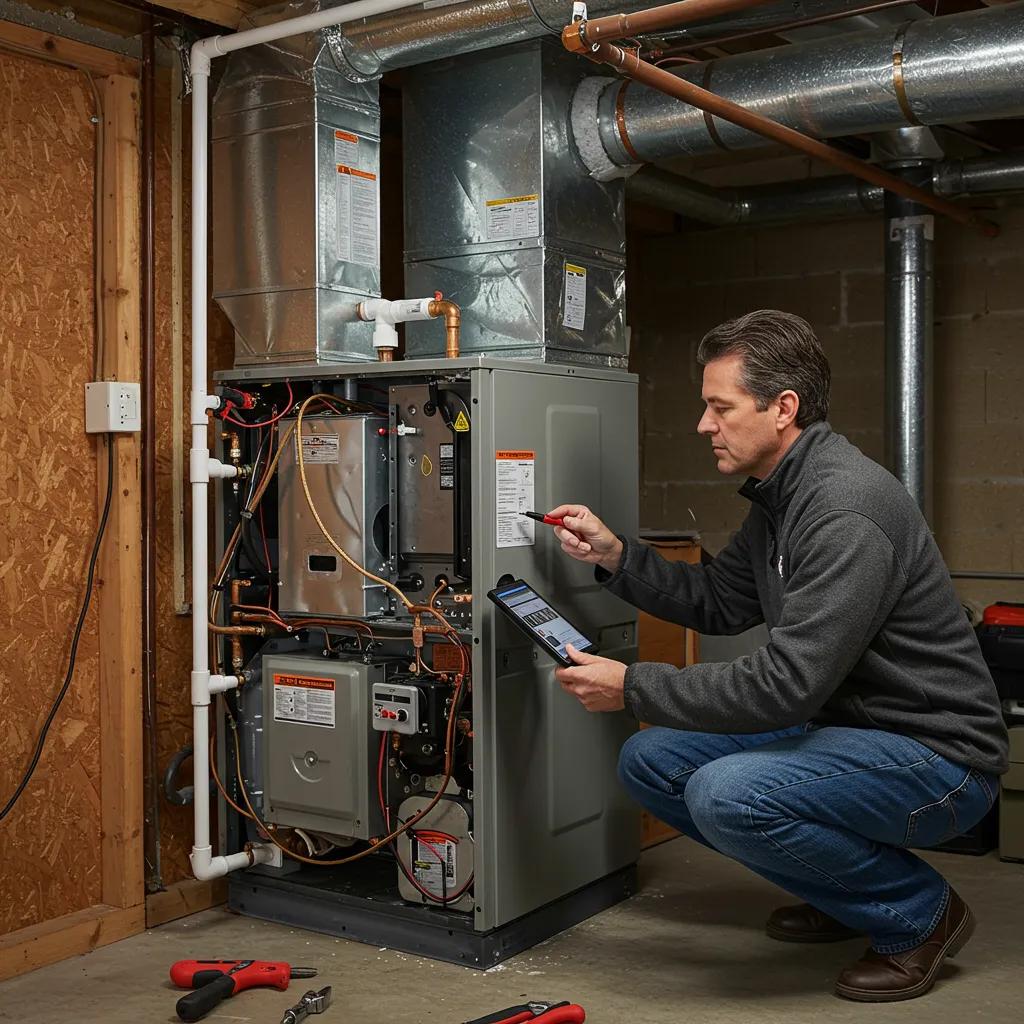
When a furnace stops producing heat, combustion, ignition, or airflow problems often lie at the heart of the malfunction. Accurate diagnosis and safe troubleshooting can restore warmth or prompt timely expert repairs.
What Are Common Causes of Furnace Heating Failures?
Furnace heating failures arise from ignition component wear, airflow obstructions, or electrical control faults that interrupt the heating cycle.
Primary causes include:
- Pilot light or ignition sensor failure preventing burner activation.
- Clogged air filter leading to poor airflow and system shutdown.
- Blower motor or belt issues halting heat distribution.
- Limit switch malfunctions triggering safety shutdowns.
- Faulty gas valve preventing fuel delivery.
Recognizing these root causes guides effective troubleshooting or indicates when experienced Erie HVAC technicians should perform safe, certified repairs.
What Are Simple Furnace Troubleshooting Steps for Homeowners?
Safe, basic checks help homeowners isolate minor furnace faults and decide if professional service is needed.
- Ensure the thermostat is set to “Heat” and programmed correctly.
- Replace a dirty air filter to restore airflow.
- Check that the pilot assembly or electronic ignition is clean and operational.
- Inspect the furnace’s power switch and reset any tripped breakers.
- Listen for unusual blower or burner sounds that may signal motor wear.
Completing this DIY checklist often resolves common furnace issues or confirms the need for advanced diagnostics by a licensed technician.
When Is It Necessary to Contact Erie HVAC Technicians for Furnace Repair?
Professional furnace repair is warranted when safety controls, gas components, or electrical systems exhibit complex failures beyond basic homeowner intervention.
- Repeated ignition lockouts after several restart attempts.
- Gas odor near the furnace or weak burner flame color.
- Persistent blower motor humming without airflow.
- Cracked heat exchanger risking carbon monoxide leaks.
- Furnace cycling on limit switches despite filter replacement.
C Carlin Plumbing’s certified specialists perform comprehensive safety inspections, combustion analysis, and durable component replacements to keep your heating system reliable.
What Do Strange HVAC Noises Mean and How Can You Address Them?
Unfamiliar sounds from heating or cooling equipment often signal mechanical wear, loose parts, or airflow issues that require either simple tightening or professional maintenance.
Which Noises Indicate Serious HVAC Problems?
Certain loud or irregular noises point to critical component failures that should not be ignored:
- Banging suggests failed blower motor bearings or loose duct sections.
- Squealing often signals worn blower belts or failing motor bearings.
- Rattling may indicate loose screws, panels, or debris in the blower housing.
- Hissing usually reveals refrigerant leaks or pressure relief valve malfunctions.
These warning sounds merit immediate inspection to prevent further damage or safety hazards in your HVAC system.
How Can You Identify the Source of HVAC Noises?
Systematic listening and visual inspection help isolate the origin of disruptive HVAC sounds for targeted fixes.
- Turn off the system and remove vent covers to check for debris or loose screws.
- Restart the unit and listen at each access panel for noise proximity.
- Observe blower compartment while running to spot belt or motor anomalies.
- Check refrigerant lines for hissing or bubbling at joints.
Mapping the sound source guides either a homeowner’s simple tightening or scheduling a detailed service call.
What Are Safe DIY Fixes and When to Seek Expert Help?
Minor noise issues often have straightforward solutions, while severe mechanical faults require certified technicians.
- Tighten loose screws on access panels and duct joints.
- Lubricate blower bearings if accessible without electrical disassembly.
- Clear debris from fan blades and blower housing.
Call a professional when you encounter:
- Grinding sounds from the motor indicating internal bearing failure.
- Persistent belt slipping or tearing.
- Refrigerant leak hissing that persists after tightening fittings.
Experienced C Carlin Plumbing technicians handle advanced mechanical repairs, ensuring quiet, efficient operation under warranty.
How to Troubleshoot Thermostat Problems Affecting Your HVAC System?
Thermostats control temperature regulation and system cycling, so calibration errors or wiring faults can mislead HVAC equipment into under- or over-heating.
What Are Signs of a Faulty or Miscalibrated Thermostat?
Thermostat malfunctions produce inconsistent system responses, short cycling, or no activation of heating and cooling equipment.
- Temperature drift where room temperature diverges from setpoint by several degrees.
- System short cycling with rapid on/off sequences.
- Unresponsive display or buttons.
- Delayed fan activation after temperature change commands.
Recognizing these symptoms allows you to reset, recalibrate, or replace the control device before scheduling professional assistance.
How Do You Reset or Replace a Thermostat?

Resetting or replacing a thermostat often restores accurate temperature control without extensive HVAC system work.
- Power off the thermostat at the breaker.
- Remove the cover and check for loose wires on labeled terminals.
- Press the reset button if available or follow manufacturer reset sequence.
- Replace the thermostat with a compatible model, wiring each conductor to its designated terminal.
- Restore power and configure temperature settings per the installation guide.
Completing this process reestablishes reliable control or confirms the need for advanced diagnostics by a licensed technician.
How Do Smart Thermostats Impact HVAC Troubleshooting?
Smart thermostats enhance energy efficiency and remote control but introduce software and communication layers that complicate basic troubleshooting.
- Provide diagnostic codes for system faults.
- Offer mobile alerts when temperature sensors detect anomalies.
- Automatically adjust schedules for optimized performance.
When troubleshooting smart devices, check Wi-Fi connectivity, firmware updates, and app settings before inspecting HVAC hardware or calling professional support.
What Preventative Maintenance Steps Help Avoid HVAC Issues in Erie, PA?
Regular maintenance preserves system efficiency, extends equipment lifespan, and prevents emergency breakdowns, especially in the Erie, PA climate with its seasonal extremes.
How Often Should You Change Air Filters and Clean Ductwork?
Air filters require replacement every 1–3 months depending on usage and indoor air quality, while ductwork cleaning is recommended every 3–5 years or after significant renovation. Maintaining clean filters and ducts improves airflow, reduces system strain, and minimizes dust circulation, setting the stage for effective heat exchange and responsive climate control year-round.
What Are Essential Seasonal HVAC Tune-Up Tasks?
A structured seasonal tune-up ensures reliable operation during heating and cooling seasons.
- Inspecting and tightening electrical connections.
- Testing safety controls, limit switches, and gas valves.
- Cleaning condenser coils and evaporator coils.
- Verifying refrigerant pressures and combustion efficiency.
- Lubricating moving parts and checking belt tensions.
Completing these steps ahead of peak demand prevents unexpected failures and maintains energy efficiency.
How Does Regular Maintenance Improve Energy Efficiency and Indoor Air Quality?
Routine maintenance enhances heat transfer, reduces compressor runtimes, and maintains balanced airflow, leading to up to 15 percent energy savings. Cleaner filters and ducts also lower allergen levels, promoting healthier indoor environments for occupants and supporting overall HVAC longevity.
When Should You Call a Professional HVAC Technician in Erie, PA?
Knowing when to seek expert diagnosis and repair ensures safety, preserves system warranties, and delivers reliable long-term performance.
What HVAC Problems Require Expert Diagnosis and Repair?
Complex repairs involving high-pressure refrigerant, gas piping, or electrical control boards demand licensed technicians to ensure compliance and safety.
- Refrigerant leaks requiring EPA-certified recharge.
- Faulty gas valves or cracked heat exchangers risking carbon monoxide.
- Electrical control board failures or burned wiring.
- Major motor replacements or compressor rebuilds.
- Emergency system shutdowns during extreme weather.
How Does C Carlin Plumbing Provide Reliable HVAC Repair Services?
C Carlin Plumbing combines 150 years of technician expertise, licensing, and insurance coverage to deliver comprehensive HVAC solutions. As a one-stop plumbing and HVAC provider in Erie, PA, we offer transparent pricing, emergency service availability, and durable repairs backed by manufacturer and workmanship warranties.
How to Schedule Emergency HVAC Repair with Certified Technicians?
When your heating or cooling system fails unexpectedly, contact our dispatch team at (814) 825-2805 for rapid emergency response. Our certified HVAC professionals assess severity, provide on-site estimates, and restore safe, efficient operation with upfront pricing and quality workmanship.
Maintaining a comfortable, energy-efficient environment hinges on early identification and prompt resolution of HVAC issues. By following these troubleshooting steps and recognizing when expert intervention is needed, you preserve system reliability and indoor comfort year-round. For complex repairs or preventative maintenance in Erie, PA, trust C Carlin Plumbing’s licensed, insured technicians to deliver transparent, warrantied HVAC solutions that safeguard your home or business.

